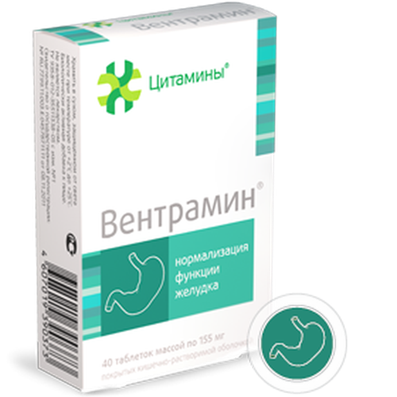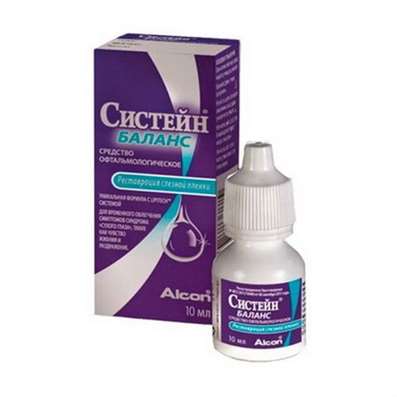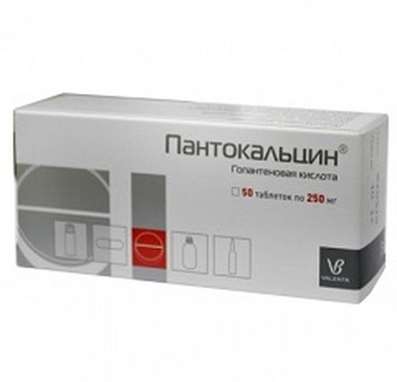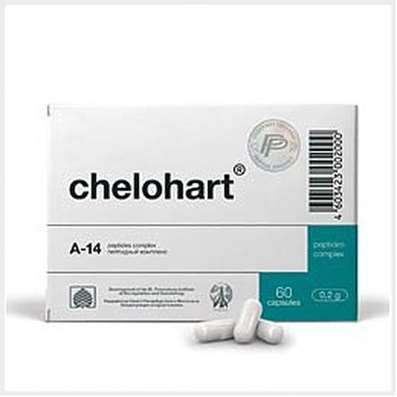Instruction for use: Parnasan
I want this, give me price
Dosage form: tablets
Active substance: Olanzapine*
ATX
N05AH03 Olanzapine
Pharmacological group:
Neuroleptics
The nosological classification (ICD-10)
F20 Schizophrenia: Schizophrenic conditions; Exacerbation of schizophrenia; Schizophrenia; Chronic schizophrenia; Dementia praecox; Bleuler's disease; Psychotic discordant; Dementia early; The febrile form of schizophrenia; Chronic schizophrenic disorder; Psychosis of the schizophrenic type; Acute form of schizophrenia; Acute schizophrenic disorder; Cerebral Organic Insufficiency in Schizophrenia; Acute attack of schizophrenia; Schizophrenic psychosis; Acute schizophrenia; Sluggish schizophrenia; Sluggish schizophrenia with apathoabulic disorders; Acute stage of schizophrenia with excitation
F23 Acute and transient psychotic disorders: Psychogenic psychosis; Psychosis acute; Short-term psychotic disorder
F25 Schizoaffective disorders: Schizoaffective disorders; Schizoaffective psychosis; Schizoaffective disorder
F29 Inorganic psychosis, unspecified: Childhood psychoses; Psychomotor agitation in psychoses; Hallucinatory-delusional disorders; Hallucinatory-delusional syndrome; Intoxication psychosis; Manic-delusional disorders; Manic chronic psychosis; Manic psychosis; Acute psychosis; paranoid psychosis; Paranoid psychosis; Subacute psychosis; Presenile psychosis; Psychosis; Intoxicating psychosis; Psychosis is paranoid; Psychosis in children; Reactive psychosis; Chronic psychosis; Chronic hallucinatory psychosis; Chronic psychosis; Chronic psychotic disorder; Schizophrenic psychosis
F31 Bipolar affective disorder: Mood disorders bipolar; Affective bipolar psychosis; Manic-melancholic psychosis; Intermittent psychosis; Circular psychosis; Cyclophrenia; Bipolar disorders; Bipolar psychosis; Affective insanity; Manic-depressive syndrome; Psycho Manic-Depressive; Depressive episode of bipolar disorder
F31.1 Bipolar affective disorder, current episode of mania without psychotic symptoms: Mania in bipolar disorders
F31.2 Bipolar affective disorder, current episode of mania with psychotic symptoms: Manic episode of bipolar disorder; Mania in bipolar disorders
R44.3 Hallucinations, unspecified: Hallucinatory conditions; Hallucinations; Acute hallucinatory state; Chronic hallucinatory conditions
Composition
Tablets covered with a film membrane 1 tab.
active substance:
olanzapine 2.5 mg; 5 mg; 7.5 mg; 10 mg; 15 mg; 20 mg
Excipients
nucleus: crospovidone - 2/4/6/8/6/8 mg; MSC (type 102) - 11.5 / 23 / 34.5 / 34.5 / 34.5 / 46 mg; MSC (type 200) - 26.5 / 53 / 79.5 / 106/72/96 mg; Ludistress (lactose monohydrate 93%, povidone 3.5%, crospovidone 3.5%) - 58.25 / 116.5 / 174.75 / 233 / 174.75 / 233 mg; magnesium stearate - 1.259 / 2.5 / 3.75 / 5 / 3.75 / 5 mg
film shell: Opadry II white (polyvinyl alcohol - 45.52%, titanium dioxide - 32%, talc - 20%, soy lecithin - 2%, xanthan gum - 0.48%) - 3/6/9/12/9 / 12 mg
Description of dosage form
Tablets of 2.5 mg: white, round, biconvex, covered with a film sheath, engraved "N23" on one side.
Tablets 5 mg: white, round, biconvex, covered with a film sheath, engraved "N24" on one side.
Tablets 7.5 mg: white, round, biconcave, film-coated, with engraving "N25" on one side.
Pharmacokinetics
Absorption of olanzapine is high, does not depend on food intake; Tmax after oral administration - 5-8 hours. When taken in the dose range of 1-20 mg, the concentration in the plasma changes linearly, in proportion to the dose. At a plasma concentration of 7-1000 ng / ml, the association with proteins is 93%; mainly with albumin and alpha-1-acid glycoprotein. Penetrates through gistogematicheskie barriers, incl. GEB. Metabolised in the liver by conjugation and oxidation, active metabolites are not formed, the main pharmacological activity of the drug is due to olanzapine. The main circulating metabolite is glucuronide, it does not penetrate the BBB. Isozymes CYP1A2 and CYP2D6 cytochrome P450 are involved in the formation of N-desmethyl and 2-hydroxymethyl metabolites of olanzapine. Smoking, sex and age affect T1 / 2 and plasma clearance. Nonsmokers (clearance - 18,6 l / h, T1 / 2 - 38,6 h), smoking (clearance - 27,7 l / h, T1 / 2 - 30,4 h), women (ground clearance - 18,9 l / h, T1 / 2 - 36.7 hours), men (ground clearance - 27.3 l / h, T1 / 2 - 32.3 hours). In patients older than 65 years, T1 / 2 is 51.8 hours, and plasma clearance is 17.5 l / h; in patients younger than 65 years - 33.8 h, and the plasma clearance - 18.2 l / h. Plasma clearance is lower in patients with hepatic insufficiency, women and non-smokers compared to the corresponding groups of patients. It is excreted mainly by kidneys (60%) in the form of metabolites.
Indication of Parnasan
schizophrenia in adults (exacerbation, supportive and prolonged anti-relapse therapy), psychotic disorders in schizophrenia with productive (including delirium, hallucinations, automatisms) and / or negative (emotional flatness, decreased social activity, impoverishment of speech), symptomatology and concomitant affective disorders;
bipolar affective disorder in adults (monotherapy or combination with lithium or valproic acid preparations) - acute manic or mixed episodes with / without psychotic manifestations and with / without rapid phase change;
prevention of recurrence of mania in bipolar disorder (with the effectiveness of the drug in the treatment of the manic phase).
Contraindications
hypersensitivity to the active substance and other components of the drug;
lactose intolerance, lactase deficiency, glucose-galactose malabsorption;
the period of breastfeeding;
age to 18 years (efficacy and safety not established).
With caution: kidney failure; liver failure; benign prostatic hyperplasia; angle-closure glaucoma; paralytic intestinal obstruction; epilepsy; seizure syndrome in history; leukopenia and / or neutropenia of various genesis; Myelosuppression of various genesis, incl. myeloproliferative diseases; hypereosinophilic syndrome; cardiovascular and cerebrovascular diseases or other conditions predisposing to arterial hypotension; congenital increase in the QT interval on the ECG (increase in the QT-QTc corrected interval on the ECG) or in the presence of conditions potentially capable of inducing an increase in the QT interval (eg simultaneous use of QT prolonging drugs, chronic heart failure, hypokalemia, hypomagnesemia); elderly age; as well as the simultaneous reception of drugs of central action; phenylketonuria; immobilization; pregnancy.
Application in pregnancy and lactation
Due to the limited experience of using the drug in pregnant women, Parnasan® should be used during pregnancy only if the expected benefit justifies the potential risk to the fetus. Women should be informed of the need to inform the doctor about the onset or planned pregnancy on the background of Parnasan® therapy. There are isolated reports of tremors, arterial hypertension, lethargy and drowsiness in children born to mothers who took olanzapine in the third trimester of pregnancy. In studies, it was found that Parnasan ® penetrates into breast milk. The average dose (mg / kg) the child received when reaching Css in the mother was 1.8% of the dose of Parnasan® for the mother (mg / kg). It is not recommended to breast-feed on therapy.
Side effects
The incidence of side effects noted with the administration of Parnasan® is given in accordance with the WHO classification: very often ≥1 / 10; often - ≥1 / 100 and <1/10; infrequently - ≥1 / 1000 and <1/100; rarely - ≥1 / 10000 and <1/1000; very rarely - <1/10000, including individual messages.
From the nervous system: very often - drowsiness; often - dizziness, akathisia, parkinsonism, asthenia, dyskinesia; rarely - convulsive syndrome (more often in the background of convulsive syndrome in anamnesis); very rarely - malignant neuroleptic syndrome - CNS (see "Special instructions"), dystonia (including oculogyric crisis) and tardive dyskinesia. With the abrupt withdrawal of Parnasan ®, very seldom have symptoms such as increased sweating, insomnia, tremors, anxiety, nausea, or vomiting.
From the CVS: often - arterial hypotension (including orthostatic); infrequently - a bradycardia with a collapse or without; very rarely - an increase in the QTc interval on the ECG (see "Special instructions"), ventricular tachycardia / fibrillation and sudden death (see "Special instructions"), thromboembolism (including pulmonary artery embolism and deep vein thrombosis).
From the side of the digestive system: often - transitory anticholinergic effects, incl. constipation and dryness of the oral mucosa; transient, asymptomatic increase in hepatic transaminase activity (ALT, ACT, especially at the beginning of therapy - see "Special instructions"); rarely - hepatitis (including hepatocellular, cholestatic or mixed liver damage); very rarely - pancreatitis.
From the side of metabolism: very often - an increase in body weight; often - increased appetite, hypertriglyceridemia; very rarely - hyperglycemia and / or decompensation of diabetes mellitus, sometimes manifested by ketoacidosis or coma, including death; hypercholesterolemia, hypothermia.
On the part of the organs of hematopoiesis: often - eosinophilia; rarely - leukopenia; very rarely - thrombocytopenia, neutropenia.
From the side of the musculoskeletal system: very rarely - rhabdomyolysis.
From the genitourinary system: very rarely - urinary retention, priapism.
From the skin: rarely - skin rash; infrequently - photosensitization reactions; very rarely - alopecia.
Allergic reactions: rarely - skin rash; very rarely - anaphylactoid reactions, angioedema, skin itching or urticaria.
Other: often - asthenia, peripheral edema; very rarely - withdrawal syndrome.
Laboratory indicators: very often hyperprolactinemia; but clinical manifestations (eg gynecomastia, galactorrhea and breast enlargement) are rare. In most patients, the level of prolactin spontaneously normalized without the abolition of therapy. Rarely - transient, asymptomatic increase in ALT activity, ACT; infrequently - increased activity of CK; very rarely - increased activity of AP and total bilirubin; in isolated cases, an increase in plasma glucose of more than 200 mg / dL (suspected diabetes mellitus), 160-200 mg / dL (suspected hyperglycaemia) in patients with baseline glucose concentrations of less than 140 mg / dl. There have been cases of elevation of triglycerides (by 20 mg / dl from the initial), cholesterol (by 0.4 mg / dl from the initial), asymptomatic eosinophilia (single cases).
In elderly patients with dementia, a large incidence of deaths and cerebrovascular disorders (stroke, transient ischemic attacks) has been reported in studies. Very frequent in this category of patients were violations of gait and fall. Also often observed pneumonia, fever, lethargy, erythema, visual hallucinations and urinary incontinence.
Among patients with drug (against the background of dopamine agonists) psychoses on the background of Parkinson's disease often recorded worsening of parkinsonian symptoms and the development of hallucinations.
There are data on the development of neutropenia (4.1%) against a combination therapy with valproic acid in patients with bipolar mania. Simultaneous therapy with valproic acid or lithium helps to increase the frequency (more than 10%) of tremor development, dryness of the oral mucosa, increased appetite or weight gain. Violations of speech (from 1 to 10%) were also recorded.
Interaction
Potential drug interactions that affect olanzapine metabolism. Olanzapine is metabolized by the CYP1A2 isoenzyme, therefore inhibitors or inducers of cytochrome P450 isoenzymes that exhibit specific activity against CYP1A2 may affect the pharmacokinetic parameters of olanzapine.
Inductors CYP1A2. The clearance of olanzapine may be increased in smokers or in the simultaneous administration of carbamazepine, which leads to a decrease in the concentration of olanzapine in the blood plasma. Clinical observation is recommended. some cases require an increase in the dose of the drug.
Inhibitors of CYP1A2. Fluvoxamine - a specific inhibitor of CYP1A2 - significantly reduces the clearance of olanzapine. The average increase in Cmax of olanzapine after the administration of fluvoxamine in non-smokers was 54%, and for men who smoke, 77%. The average increase in olanzapine AUC in these patient categories was 52% and 108%, respectively. In patients taking fluvoxamine or any other inhibitor of the isoenzyme CYP1A2 (eg ciprofloxacin), olanzapine therapy should be started with smaller doses. A decrease in the dose of olanzapine may also be required if the inhibitors of the isoenzyme CYP1A2 are added to the therapy.
Drug interactions affecting / not affecting the bioavailability of olanzapine. Activated charcoal reduces the absorption of olanzapine when ingested by 50-60%, so it should be taken at least 2 hours before or after taking olanzapine.
Fluoxetine, an inhibitor of the isoenzyme CYP1A2 (60 mg once or 60 mg daily for 8 days) increases the Cmax of olanzapine by 16% and reduces the clearance by 16%, which is not clinically important (olanzapine dose adjustment is not required).
A single dose of magnesium or aluminum-containing antacids or cimetidine does not affect the pharmacokinetics of olanzapine.
Potential ability of olanzapine to influence other drugs. Olanzapine may reduce the effects of direct and indirect dopamine agonists.
Under in vitro conditions, olanzapine does not suppress the main cytochrome P450 isoenzymes (eg 1A2, 2D6, 2C9, 2C19, 3A4). In vivo, no inhibition of the metabolism of the following active substances has been observed: tricyclic antidepressants (CYP2D6), warfarin (CYP2C9), theophylline (CYP1A2), and diazepam (CYP3A4 and 2C19).
No interaction was detected when used simultaneously with lithium or biperidene.
Olanzapine slightly suppresses the formation of valproic acid glucuronide (the main pathway of metabolism). Valproic acid slightly affects the metabolism of olanzapine. Clinically significant pharmacokinetic interaction between olanzapine and valproic acid is unlikely. Therapeutic monitoring of valproic acid in the blood plasma showed that, when applied simultaneously with olanzapine, no changes in valproic acid dosage are required (see "Side effects").
Care should be taken when using other drugs of the central action. Despite the fact that a single dose of alcohol (45 mg / 70 kg) does not have a pharmacokinetic effect, alcohol intake together with olanzapine may be accompanied by an increase in sedative effect on the central nervous system.
Dosing and Administration
Inside, regardless of food intake, washing down with water.
In schizophrenia: in adults, the recommended initial dose is 10 mg / day.
In a manic episode associated with bipolar disorders: in adults, 15 mg / day as monotherapy or 10 mg / day in combination with lithium or valproic acid (maintenance therapy at the same dose).
Prevention of recurrence of mania in bipolar disorder: the recommended initial dose of the drug in a state of remission is 10 mg / day. For patients who have already received Parnasan® for the treatment of manic episodes, maintenance therapy is administered in the same doses. Against the background of therapy with Parnasan ® in case of a new manic, mixed or depressive episode, if necessary, increase the dose of the drug with additional treatment of mood disorders, according to clinical indications.
The daily dose of the drug in the treatment of schizophrenia, a manic episode or for the prevention of recurrences of bipolar disorder can be 5-20 mg / day, depending on the clinical condition of the patient. An increase in the dose above the recommended initial dose is only possible after an adequate repeated clinical assessment of the patient's condition and is usually performed at intervals of at least 24 hours.
Special patient groups
Elderly patients: a reduction in the initial dose (up to 5 mg / day) is usually not recommended, but it is possible in patients older than 65 years with risk factors (see "Special instructions").
Patients with liver and / or kidney disease: it is recommended to reduce the initial dose to 5 mg / day. For moderate hepatic insufficiency (cirrhosis, grade A or B on the Child-Pugh scale), the initial dose is 5 mg / day, and further increase in the dose with caution
Women: do not need a dosage adjustment compared to men.
Non-smoking patients: dose adjustment in comparison with smoking patients (see "Interaction") is not required.
If the patient has more than one factor that can influence the absorption of the drug (female, elderly, non-smokers), it may be necessary to reduce the initial dose of the drug. If necessary, further increase in dose with caution.
Overdose
Symptoms: very often (more than 10%) - tachycardia, agitation / aggression, dysarthria, various extrapyramidal symptoms, lowering the level of consciousness from inhibition to coma; less than 2% of cases occur - delirium, convulsions, coma, NSA, respiratory depression, aspiration, arterial hypertension or arterial hypotension, arrhythmias; in very rare cases - cardiopulmonary insufficiency.
The minimum dose of Parnasan ® in acute overdose with a lethal outcome is 450 mg; the maximum dose was registered for an overdose with a favorable outcome (survival) - 1500 mg.
Treatment: a specific antidote of the drug does not exist. It is not recommended to provoke vomiting. It is necessary to wash the stomach, take activated charcoal (reduces the bioavailability of olanzapine by 60%), symptomatic treatment under the control of vital functions, including treatment of arterial hypotension and collapse, maintenance of respiratory function. It is not recommended to use epinephrine, dopamine or other sympathomimetics with β-adrenergic activity, the latter can aggravate arterial hypotension. To identify possible arrhythmias, cardiovascular control is necessary. The patient should be under continuous medical supervision until complete recovery.
Special instructions
There are very rare reports of the development of hyperglycemia and / or decompensation of diabetes mellitus, sometimes accompanied by the development of ketoacidosis or diabetic coma, incl. there are reports of several lethal cases. There is no causal relationship between antipsychotic agents and these conditions. In some cases, there was a previous decompensation of weight gain, which could become a predisposing factor. Patients with diabetes mellitus or risk factors for the development of this disease are recommended regular clinical monitoring and control of blood glucose concentration
When the lipid concentration changes, correction of therapy is required.
With a sharp discontinuation of Parnasan ®, very rarely (less than 0.01%) develop the following symptoms: sweating, insomnia, tremor, anxiety, nausea, or vomiting.
With the withdrawal of the drug, a gradual dose reduction is recommended.
Anticholinergic activity. Because the clinical experience of using Parnasan® in patients with concomitant diseases is limited, the drug should be used with caution in patients with benign prostatic hyperplasia, paralytic intestinal obstruction, and closed-angle glaucoma.
Experience in the use of Parnasan® in patients with psychoses in Parkinson's disease caused by dopaminomimetic treatment. Parnasan® is not recommended for the treatment of psychosis in Parkinson's disease caused by dopaminomimetic treatment. The symptoms of parkinsonism and hallucinations increase. At the same time, the Parnasan® drug did not exceed the placebo for the effectiveness of psychosis treatment.
Treatment of psychosis and / or behavioral disorders in dementia. Parnasan® is not indicated because of increased mortality and increased risk of cerebrovascular disorders (stroke, transient ischemic attacks) in this category of patients. These patients had previous risk factors (cerebrovascular history, transient ischemic attack, hypertension, smoking), as well as concomitant diseases and / or drug administration associated with cerebrovascular disorders. The increase in mortality does not depend on the dose of Parnasan® or the duration of therapy. Risk factors predisposing to increased mortality include: age over 65 years, dysphagia, sedation, malnutrition and dehydration, lung diseases (eg pneumonia, including aspiration), simultaneous reception of benzodiazepines. However, the increased mortality in the Parnasan® group compared to placebo did not depend on these risk factors.
With antipsychotic therapy, the improvement in the clinical state of the patient occurs in the period from several days to several weeks. During this period, the patient needs careful observation.
Violation of the function of the liver. At the beginning of therapy, an asymptomatic increase in hepatic transaminase activity (ALT and ACT) is possible. In patients with initially increased activity of ACT and / or ALT, liver failure and conditions potentially limiting the functionality of the liver, as well as those taking hepatotoxic drugs, caution should be exercised when using Parnasan®. When the activity of ALT and / or ACT is increased against the background of drug therapy, it is recommended to observe the patient and, possibly, reduce the dose of the drug. When diagnosing hepatitis (including hepatocellular, cholestatic or mixed), Parnasan® should be discontinued.
Hematologic disorders. The drug should be used with caution in patients with leukopenia and / or neutropenia of any origin, myelosuppression of drug origin, as well as radiation or chemotherapy, due to concomitant diseases, in patients with hypereosinophilic conditions or myeloproliferative diseases. Neutropenia has often been observed with simultaneous administration of Parnasan® and valproic acid (see "Side effects").
Malignant neuroleptic syndrome (CNS). ZNS is a potentially life-threatening condition associated with antipsychotic medication (neuroleptics), incl. with Parnasan®.
Clinical manifestations of the ZNS: fever, rigidity of muscles, impaired consciousness, vegetative disorders (unstable pulse or lability in blood pressure, tachycardia, increased sweating, arrhythmias). Additional symptoms of CNS: increased activity of CK, myoglobinuria (against rhabdomyolysis) and acute renal failure. With the development of symptoms of the NSA, as well as an increase in body temperature without apparent causes, it is necessary to cancel all neuroleptics, including. preparation Parnasan®.
Convulsive syndrome. The drug Parnasan® should be used with caution in patients with a history of seizures or by the presence of factors that reduce the threshold of convulsive readiness. Against the background of taking Parnasan®, cramps were rarely recorded.
Late dyskinesia. Therapy with Parnasan® was accompanied by a significantly lower incidence of late dyskinesia compared with haloperidol. The risk of developing tardive dyskinesia increases with increasing duration of therapy. If there are signs of this condition, the patient taking the Parnasan® drug should cancel the drug or reduce its dose. Symptoms of tardive dyskinesia may increase or manifest after the drug is discontinued.
General activity in relation to the central nervous system. Care should be taken when using other means of central action and alcohol.
Cerebrovascular adverse events, including stroke in elderly patients with dementia. In elderly patients, postural arterial hypotension is infrequent. Patients over 65 years of age are recommended to periodically monitor blood pressure. Parnasan® should be administered with caution to patients with an established extended QTc interval, especially elderly patients, with congenital syndrome of increased QT interval, chronic heart failure, myocardial hypertrophy, hypokalemia, and hypomagnesemia.
When taking Parnasan®, very rarely (less than 0.01%) cases of venous thromboembolism have been reported. The causal relationship between Parnasan® therapy and vein thrombosis has not been established. Since patients with schizophrenia often have acquired risk factors for venous thrombosis, all possible other factors (eg, immobilization) should be identified and preventive measures taken.
In vitro, olanzapine exhibits antagonism against dopamine and, like other neuroleptics, can theoretically suppress the action of levodopa and dopamine agonists.
Influence on ability to operate transport and work with mechanisms. Since Parnasan® can cause drowsiness and dizziness, patients should be cautious when working with mechanisms that require increased concentration of attention, incl. and when driving.
Release form
Tablets, film-coated, 2.5 mg, 5 mg, 7.5 mg, 10 mg, 15 mg, 20 mg. In the blister of OPA / aluminum / PVC film and aluminum foil for 10 pcs. 3 blisters in a cardboard box.
Conditions of leave from pharmacies
On prescription.
Storage conditions of the drug Parnasan
At a temperature not exceeding 30 ° C.
Keep out of the reach of children.
Shelf life of the drug Parnasan
3 years.
Do not use after the expiry date printed on the package.

 Cart
Cart





